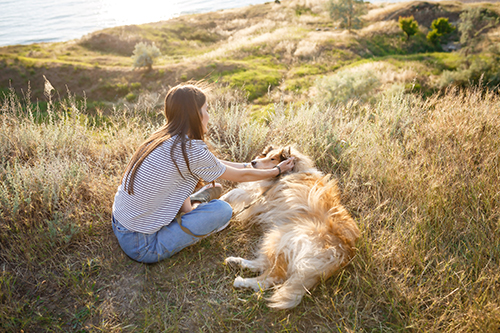Crate Training
- blogs
- September 29, 2023
- admin
Crate training is a valuable skill that can help dogs feel secure, aid in housebreaking, and provide them with a comfortable space of their own. Here’s a comprehensive approach to crate training a dog, based on popular and effective methods:
1.Choose the Right Crate:
Select an appropriately-sized crate that allows your dog to stand, turn around, and lie down comfortably. Avoid a crate that is too big, as dogs may be more likely to use a corner for bathroom purposes.
2.Introduction to the Crate:
Place the crate in a common area where your dog spends time. Keep the door open and encourage your dog to explore it naturally. Toss treats, toys, or a favorite blanket inside to make it appealing.
3.Positive Associations:
Foster a positive connection between your dog and the crate. Gradually place your dog’s meals near the crate, then inside it. Use treats and praise to reward your dog for entering the crate willingly.
4.Gradual Acclimatization:
Once your dog is comfortable entering the crate, start closing the door for short periods while you’re present. Gradually increase the time spent inside, rewarding your dog for calm behavior.
5.Alone Time in the Crate:
Extend the crate time to simulate your absence. Start with short intervals, gradually increasing them. Avoid letting your dog out when they’re whining or barking to prevent reinforcing unwanted behavior.
6.Use of Command Words:
Introduce command words like “crate” or “kennel” when your dog enters the crate. This can help them associate the command with the action, making crate time more manageable.
7.Crate as a Safe Haven:
Teach your dog that the crate is a secure and comfortable space. Add a comfortable bedding, a few toys, and a water bowl for longer stays.
8.Nighttime Routine:
For puppies, place the crate near your bed initially, so they don’t feel isolated. Gradually move the crate to its permanent location while maintaining proximity.
9.Consistency is Key:
Establish a consistent routine for meals, bathroom breaks, and crate time. Consistency helps your dog understand expectations and reduces confusion.
10.Positive Departures and Returns:
Avoid making a big fuss when leaving or returning home. Keep departures and arrivals low-key to prevent anxiety-related behaviors.
11.Avoid Using the Crate as Punishment:
Never use the crate as a form of punishment. It should remain a positive and safe place for your dog.
12.Gradual Independence:
As your dog becomes more comfortable, extend the time they spend in the crate, preparing them for longer periods of being alone.
13.Monitor and Adjust:
Pay attention to your dog’s comfort level and make adjustments as needed. Some dogs may progress faster than others, so be flexible in your approach.
Remember, every dog is unique, and the timeline for successful crate training can vary. Patience, positive reinforcement, and a consistent approach are essential for effective crate training.

